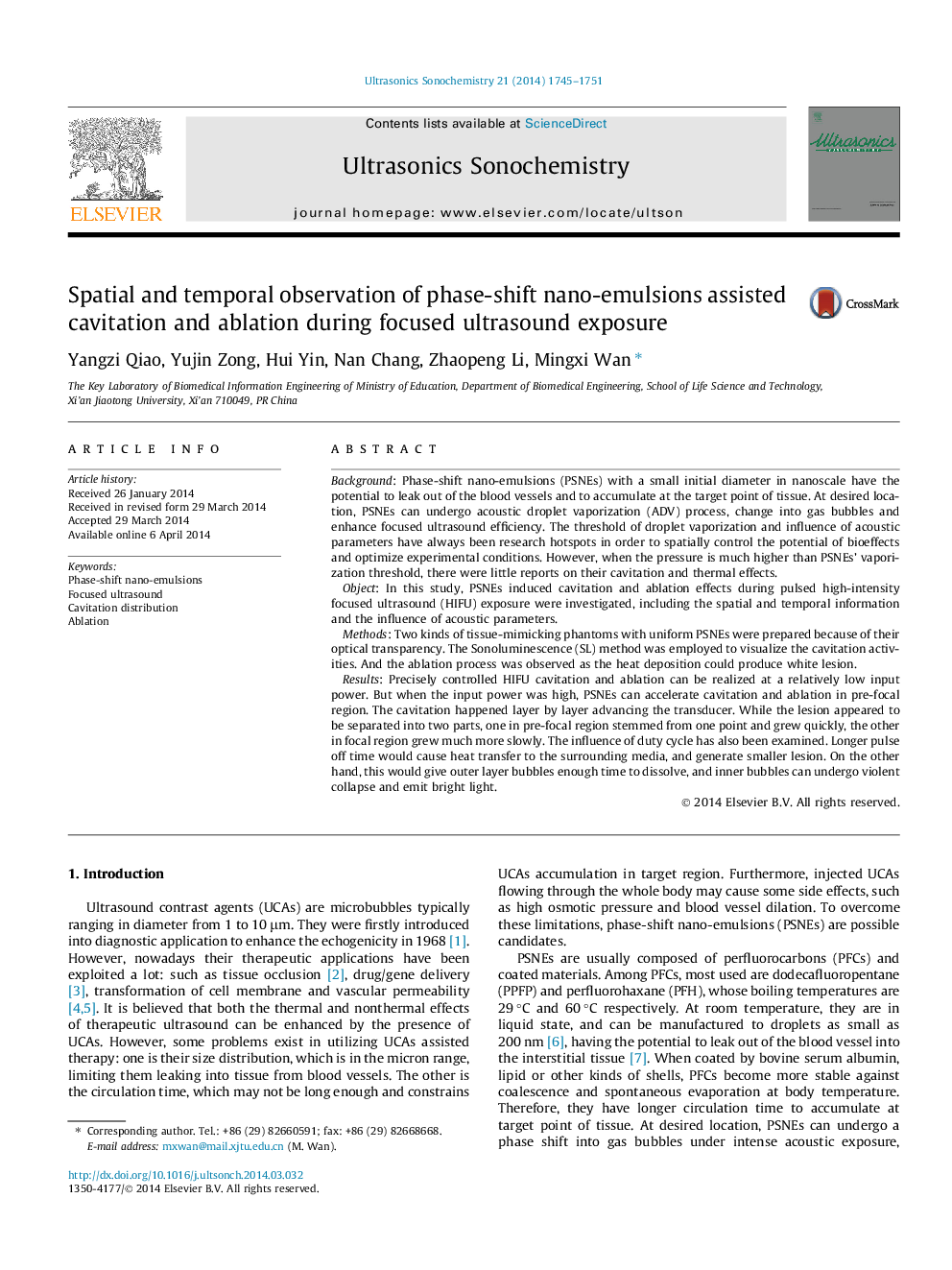| کد مقاله | کد نشریه | سال انتشار | مقاله انگلیسی | نسخه تمام متن |
|---|---|---|---|---|
| 1266100 | 972261 | 2014 | 7 صفحه PDF | دانلود رایگان |
• Phase-shift nano-emulsions were uniformly buried into tissue-mimicking phantoms.
• Precisely controlled HIFU cavitation and ablation can be realized at relative low input power.
• The cavitation happened layer by layer advancing the transducer at high input power.
• The lesion appeared to be separated into two parts with higher input power and duty cycle.
• The lower duty cycle with longer pulse-off time would generate intense cavitation, however, smaller lesion.
Background: Phase-shift nano-emulsions (PSNEs) with a small initial diameter in nanoscale have the potential to leak out of the blood vessels and to accumulate at the target point of tissue. At desired location, PSNEs can undergo acoustic droplet vaporization (ADV) process, change into gas bubbles and enhance focused ultrasound efficiency. The threshold of droplet vaporization and influence of acoustic parameters have always been research hotspots in order to spatially control the potential of bioeffects and optimize experimental conditions. However, when the pressure is much higher than PSNEs’ vaporization threshold, there were little reports on their cavitation and thermal effects.Object: In this study, PSNEs induced cavitation and ablation effects during pulsed high-intensity focused ultrasound (HIFU) exposure were investigated, including the spatial and temporal information and the influence of acoustic parameters.Methods: Two kinds of tissue-mimicking phantoms with uniform PSNEs were prepared because of their optical transparency. The Sonoluminescence (SL) method was employed to visualize the cavitation activities. And the ablation process was observed as the heat deposition could produce white lesion.Results: Precisely controlled HIFU cavitation and ablation can be realized at a relatively low input power. But when the input power was high, PSNEs can accelerate cavitation and ablation in pre-focal region. The cavitation happened layer by layer advancing the transducer. While the lesion appeared to be separated into two parts, one in pre-focal region stemmed from one point and grew quickly, the other in focal region grew much more slowly. The influence of duty cycle has also been examined. Longer pulse off time would cause heat transfer to the surrounding media, and generate smaller lesion. On the other hand, this would give outer layer bubbles enough time to dissolve, and inner bubbles can undergo violent collapse and emit bright light.
Journal: Ultrasonics Sonochemistry - Volume 21, Issue 5, September 2014, Pages 1745–1751
